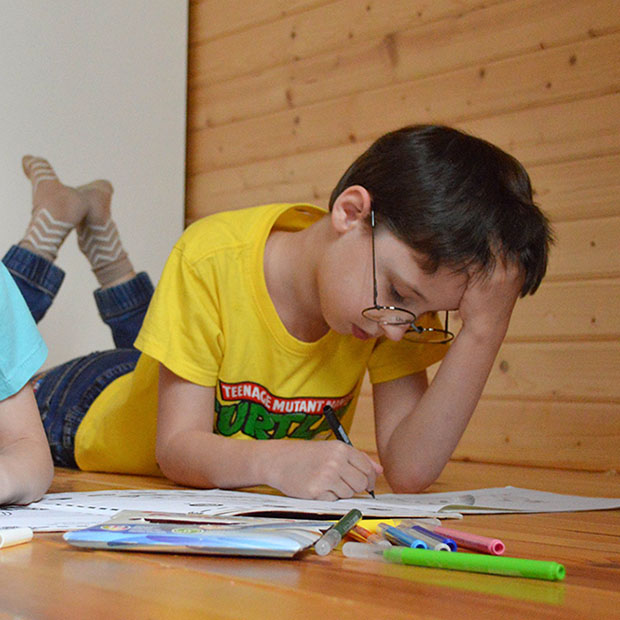Recognizing Childhood Vision Problems

Healthy, functioning eyesight is incredibly important to a child’s education and development.
That’s because as much as 80% of all learning is visual, and experts estimate that more than half of childhood learning difficulties are the result of undiagnosed vision problems. So what can parents do to make sure their child doesn’t experience the setbacks that come with an undiagnosed vision problem?
Why Are Vision Problems So Commonly Undiagnosed?
The simple reality is that a child doesn’t know the difference between normal vision and a vision problem; they only know their own experience. This makes them much less capable of describing what’s wrong to an adult. Instead, they might become fidgety and distracted and fail to accomplish assigned tasks, and an adult might scold them instead of recognizing that there’s an underlying problem.
All the child knows in that situation is that the best they can do isn’t good enough. They might believe they aren’t good at learning or that school isn’t fun, when in reality they simply can’t see well and this is something that could be fixed.
What Vision Problems Might a School Nurse Miss?
The inability of children to self-report a vision problem isn’t the only reason it could go undiagnosed; many of them also don’t receive comprehensive eye exams before they begin school. Parents may rely on the school nurse and the big E chart to determine whether their kids have healthy eyesight, but the big E chart can only diagnose nearsightedness. It will miss a wide array of problems, including:
- Amblyopia or “lazy eye”: poor vision in one eye due to astigmatism, crossed eyes, or difference in refractive errors between the two eyes. It can lead to irreversible vision loss without treatment.
- Astigmatism: a refractive error that causes blurry vision but not always in ways that are caught in a vision screening. Can usually be treated with corrective lenses.
- Convergence insufficiency: the tendency of the eyes to drift outward when trying to focus on near objects, making reading and other close work difficult.
- Strabismus: a misalignment of the eyes where they turn up, down, in, or out. Can be corrected with patching, special glasses, or surgery.
Signs Parents Can Watch For
Some symptoms of eye problems are very easy to spot, such as an eye pointing in the wrong direction or constant squinting, but others require more training to spot. If your child exhibits some of the following symptoms, it would be worth it to schedule a comprehensive eye exam (and it would still be worth it if they don’t!):
- Frequent eye rubbing and blinking
- A short attention span, particularly for close work
- Avoiding reading or difficulty reading
- Frequent headaches
- A habit of covering one eye
- A habit of tilting the head to the side
- A tendency to hold reading materials very close
- Trouble remembering words they just read
- A tendency to lose their place while reading
Don’t Put Off Your Child’s Comprehensive Eye Exam
All parents want to give their children the best chance to succeed, and an important part of that which not enough people know about is making sure they don’t have a treatable eye problem that could interfere with their education and development. That’s why we want to get the word out! A lot of these eye problems don’t just go undiagnosed, sometimes they are misdiagnosed as learning or attention disorders!

